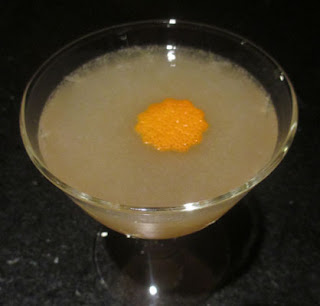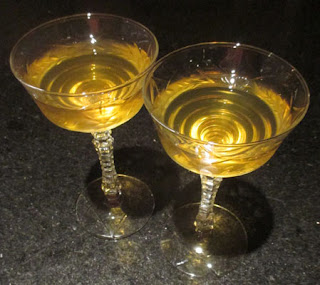1. I wrote my second book.
When I was asked in 2011 whether there would be a first book, my answer was no. Life rearranged itself and someone suggested that it happen, and 2012 brought forth Drink & Tell: A Boston Cocktail Book. I am not sure whether the book did more to propel the Boston Cocktail scene forward into the eyes of the world or alter my career path into being a professional bartender in 2013. Similarly, if you asked me in mid-2016 whether there would be a second book, the answer was no. However, as I contemplated life while flying out to Tales of the Cocktail in 2016, I decided that I ought to try to get a second edition out the following year for the 5th anniversary. From November to April, I spent 20-25 hours per week on top of a full time bartending job (and not counting the previous hours amassed with recipes and essays before that) to get Boston Cocktails: Drunk & Told into press. This book had more recipes (no repeats) and more essays than the first book, and it represented that the cocktail book that I wanted to buy myself now (whereas the first book was the one I would want to buy myself in 2012).

This year I checked off another item from my bucket list which was giving a Talk at Tales; previously, I had given talks at various events with the largest one being Portland Cocktail Week. This talk was about drinks during the Colonial period, and I presented alongside Wayne Curtis, Warren Bobrow, and Brian Maxwell. A lot of what I talked about was how to incorporate old drinks and old drink ingredients into a modern menu and get bar guests excited about it through my work at Loyal Nine. A summary of the talk can be found here.
3. I changed jobs.
After opening Loyal Nine and being promoted to lead bartender a few months later, things had run their course after two and a half years. In between, I helped the Cocktail Lab at Earl's Prudential get off the ground by being one of the first resident bartenders in October and November; for each shift, I created 3 new drinks every week for my menu and each one utilized a different key ingredient ranging from nasturtiums to cantaloupe. And at the end of November, I started training at Our Fathers Restaurant, Bar, and Deli which opened in early December. Besides the shifts at Earl's, I also did a guest shift at Backbar in late Spring that was a lot of fun.

As you can tell, the Cocktail Virgin blog is still going with over 400 posts this year even with my writing of a book that took up a lot of my time. I have also been writing a monthly post for the US Bartender's Guild site; while a good number of them are only accessible to USBG members, many are visible on their external site. I have also had a few articles published on the Tales of the Cocktail site including the history of the Daiquiri Time Out and recipes for the Rougarou Daiquiri and the Lost U-Boat. Moreover, I was asked to write another entry for the Oxford Companion to Cocktail and Spirits to add to the one I wrote in 2015.
5. The reading train continues to run.
Writing my own book book and preparing a talk for Tales certainly cut into my reading time especially with long stretches where I did not pick up or at least finish a book, but I still got through 25 titles in 2017. This included history like Daniel Okrent's Last Call, spirit production like Thad Volger's By the Smoke and the Smell, tomes on hospitality such as Zingerman's Guide to Giving Great Service, and general bar manuals such as Meehan's Bartender Manual. The whole list can be found if you trace back through my Twitter account. I already have a stack to attack for 2018...
6. I got press!
The book scored some press in the Massachusetts' Beverage Business and BostonInno amongst other places, as did my involvement with Earl's Cocktail Lab in BostonMagazine. I also had recipes in HGTV about the Piña Colada and my thoughts on the Hot Toddy in MEL Magazine, and I got interviewed on BostonChefs in their "Service Bar Chat" series.
7. I traveled.
This past January found me in Louisville, Kentucky, where I was working the back end of the American Craft Spirits Association's judging competition that was being run this year by Privateer's Maggie Campbell. In exchange for working the event, I got my hotel and most of my meals taken care of. It also allowed me to interact with a good number great bartenders/bar owners, distillers, and brand ambassadors who were judging and meet the other bartenders who were working the event; moreover, I had my nights free to drink up Louisville both of its bonded Bourbon, its beer, and its cocktails. July found me back in New Orleans for Tales of the Cocktail. I was considering skipping it to do other events, but the offer to give a talk (see #2) was too great to pass up.
8. 2017: The Year of the Boat.
This year I found myself on a boat several times for various bartender and liquor events. Five times in fact. Two were with the Boston USBG chapter with one being a kayaking adventure up the Charles and the other being a trip to George's Island for old fort exploration and a picnic. The other three were brand related. There was a Mount Gay rum tasting with master blender Allen Smith while sailing around the harbor in a decent sized boat, a trip to gather dinner on a lobster boat during a Dewar's Scotch ramble, and an adventure to another harbor locale dubbed "Jäger-Island" for the day.

Actually, I was plenty creative with around 52 drinks posted here with about a quarter of them coming from my stint at Earl's Cocktail Lab. Here are some of my favorites:
• Lili'uokalani's Downfall and Yucatan Bird as my riffs on the Missionary's Downfall and the Jungle Bird, respectively.
• The Diamond Queen as my entry into the Tales of the Cocktail Martini competition.
• Caustic Negroni and Negroni on Saturn as my Negroni Week drinks -- one created on the fly by request and the other a mashup with the gin Tiki drink the Saturn.
• Tomb of the Caribs as a 'Ti Punch riff.
• Oaxacan Smash, a Phil Ward-inspired number that I served as drink of the day at Loyal Nine and on my first menu at the Cocktail Lab at Earl's. Another Smash that I was proud of was the Cornerman as a riff on the Prizefighter.
• Lastly, the Gunwale Punch influenced by Trader Vic's Gun Club #2, Havana Cocktail, and other drinks.
10. I always have problems figuring out the last one.
This summer were the duo milestones of 9 years blogging here and 11 years of cocktail writing in general. It was a pretty productive year for blogging with a little over 400 posts for 2017. Sadly, this year found me burying Mixology Monday after 116 events spanning 11 years but not without giving it a proper Irish wake (read what the cocktail blogosphere had to say as its last words to a fallen hero). My Instagram account is still doing well with around 3500 followers and images (with recipes) going up almost daily; it is sort of a parallel to the blog but with less commentary. I have no clue what 2018 will bring for me. I am looking forward to "Tiki the Snow Away" on Instagram in January, but past that, I will have to figure it all out. So let us raise a glass to 2017. Cheers and thanks for reading along this year!















































 The 2017 collection of 855 drink recipes, bartender tributes, and essays on hospitality from CocktailVirgin's Frederic Yarm. Available at
The 2017 collection of 855 drink recipes, bartender tributes, and essays on hospitality from CocktailVirgin's Frederic Yarm. Available at  The 2012 collection of 505 drink recipes, techniques, and Boston bar recommendations from Frederic Yarm. Available at
The 2012 collection of 505 drink recipes, techniques, and Boston bar recommendations from Frederic Yarm. Available at 




